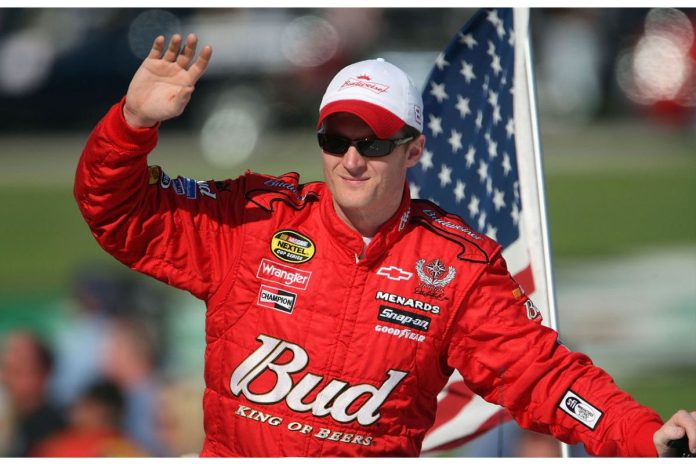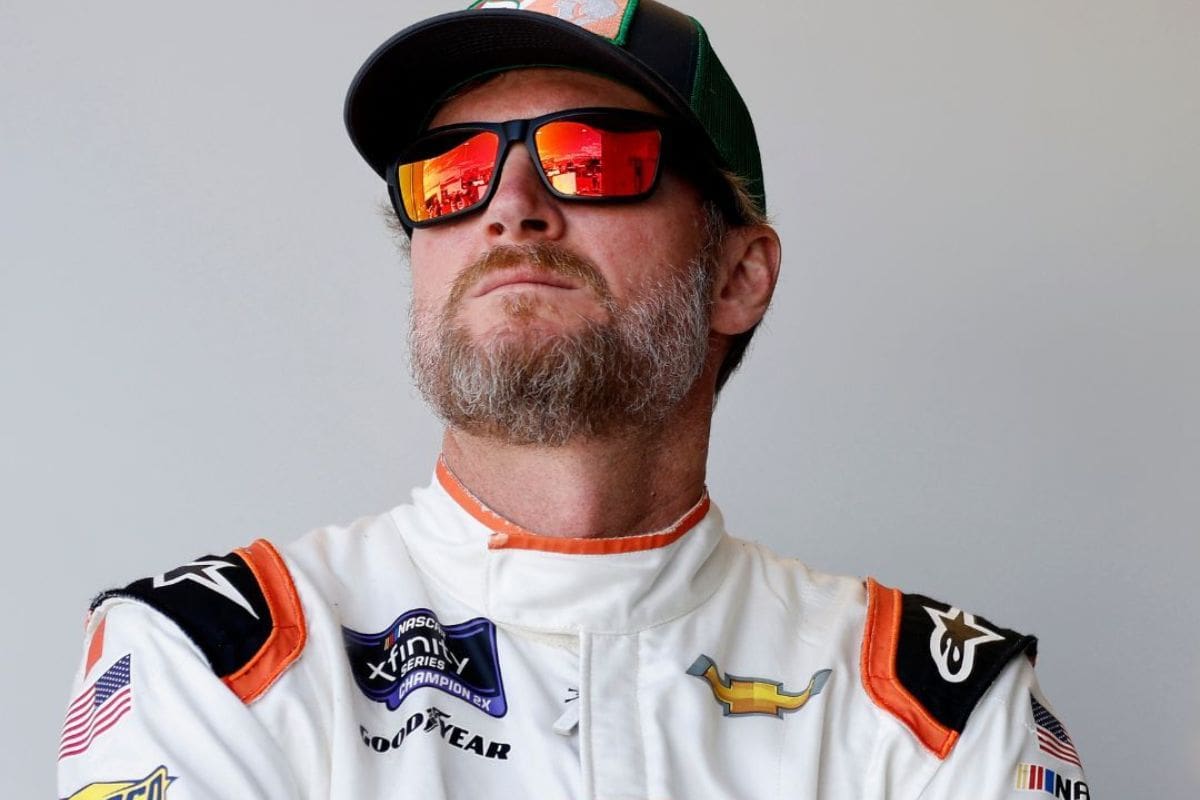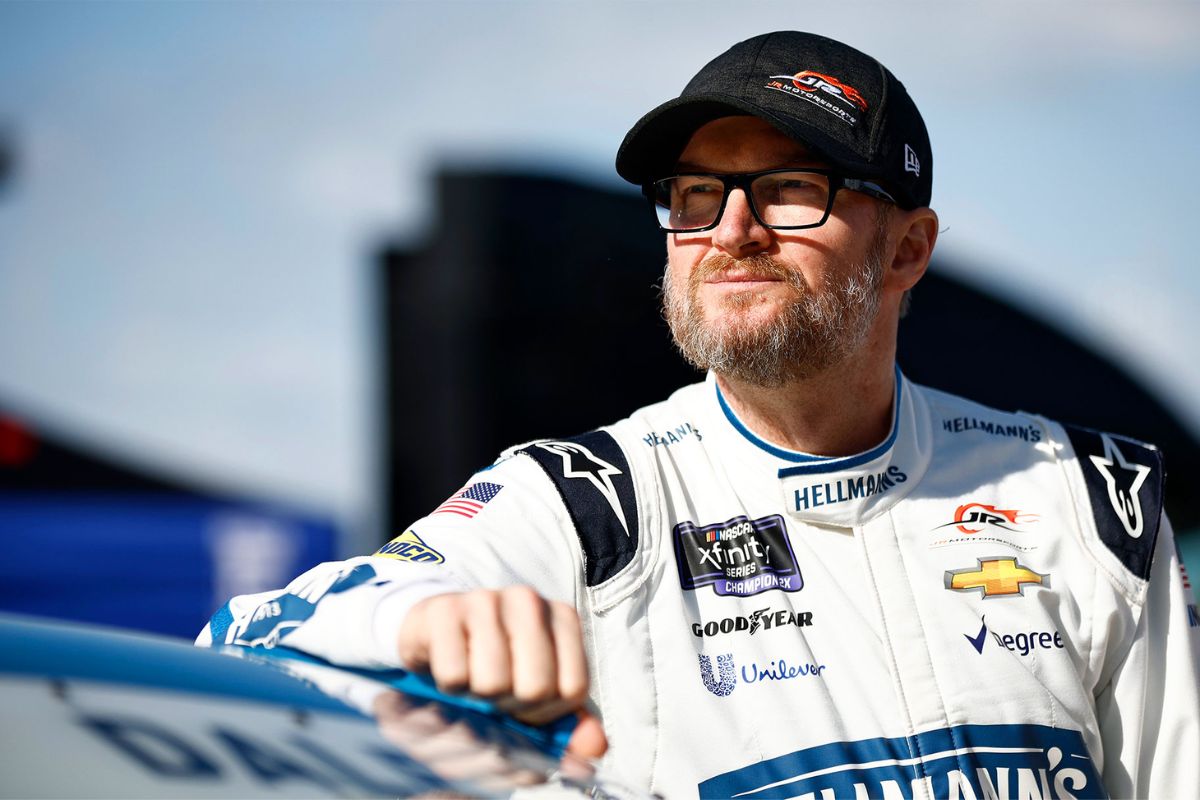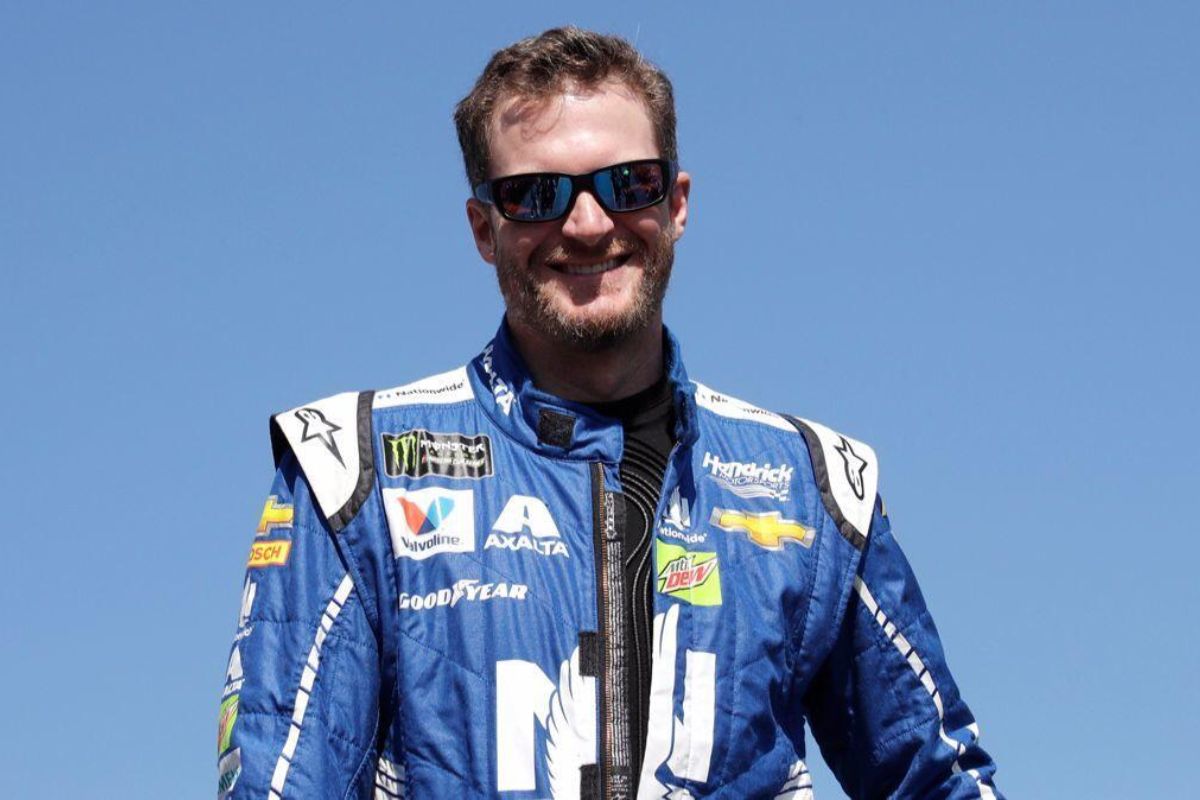Dale Jr’s Racing Rituals: Dale Earnhardt Jr.’s racing rituals, particularly his publicized use of drinks and cigarettes, serve as a unusual subject for examining the intersection of personal coping mechanisms and professional sports performance. These habits, adopted amid the legacy of his father, Dale Earnhardt Sr., were more than mere habits; they symbolized stress management for him. Analyzing these practices through a critical lens reveals not only the personal pressures faced by Dale Jr. but also prompts a discussion on the impact of such coping strategies on an athlete’s career and health
Key Takeaways
- Dale Earnhardt Jr. initially used alcohol and cigarettes to manage the intense stress and concentration demands of racing.
- His coping mechanisms reflected a contrast to other racers, like Jimmie Johnson, who followed strict fitness regimes.
- Dale Jr. later acknowledged the health risks associated with his early coping strategies in racing environments.
- His approach showcases a generational shift in stress management techniques among athletes, moving away from physical to more immediate relief methods.
- Reflecting on his past, Dale Jr. demands for the importance of finding sustainable and healthier relaxation techniques for athletes.
The Pressure of Being a NASCAR Icon’s Son
Growing up in the shadow of his father, a 7-time NASCAR Cup Series champion, Dale Earnhardt Jr. faced immense pressure from the very outset of his racing career. The expectations set for him were sky-high, not just from fans and the media, but perhaps most notably, from within the racing community itself. This scenario marked by the dual challenge of forging his own identity while also honoring his father’s legendary status.
The weight of his surname, Earnhardt, carried with it an inherent expectation of excellence. Every race, every turn, and every decision on the track was examined through the lens of his lineage rather than his own merit as a driver. Critically, the situation of living up to a legendary figure within the same professional field is with challenges. It necessitates not only matching the skills and successes of the predecessor but also facing the constant comparisons that accompany every milestone.
Coping Mechanisms: Party and Racing Performance
Dale Earnhardt Jr. often resorted to socializing and indulging in alcohol and cigarettes as a way to manage the immense pressures of his racing career. This behavior was not merely a recreational activity but rather a coping mechanism to alleviate the stress associated with his professional demands. The belief that these activities enhanced his weekend race performances reflects a broader discussion on the role of psychological relief in high-intensity sports.
“I was gonna get with my buddies and party. I felt like I didn’t run a race as good if I didn’t blow off some steam on Tuesday or Wednesday night. And when I started racing for Hendrick, I tried to clean it up a little bit. Some of the people in the building were like ‘you’re not as…Jimmie’s in great shape, look at what he does, you should be doing these things.’ And I’m like, Jimmie’s Jimmie but okay, I’ll do better. I will lose some weight, I will work out, I will do these new things to try to be in better physical shape and better mental shape.”
“I would sustain from drinking or something for a couple of weeks and the results didn’t change for me. Then I’d go party with my buddies or something or have friends over on a Tuesday night and we’d damn kick a** on the race weekend. And I was just like, maybe I’m just one of the old guards, I need to drink and smoke some cigarettes to kick a**”- dale Junior
Analyzing the effectiveness of such coping strategies, it’s essential to differentiate between short-term relief and long-term performance. Initially, these indulgences may seem to provide a necessary escape, helping to temporarily lower stress levels, which could theoretically lead to improved concentration and performance during races. However, the physiological implications of alcohol consumption and smoking—such as impaired motor skills, reduced stamina, and slower reaction times—contradict the demands of motorsport, which requires peak physical condition and mental clarity.
The contrary of Earnhardt’s approach with that of his contemporary, Jimmie Johnson, who adhered to a strict fitness regime, brings this into sharper focus. Johnson’s method aligns closely with modern sports science, which advocates for physical fitness and mental health as integral components of athletic performance.
The Influence of Family Background
The familial environment and upbringing of Dale Earnhardt Jr. greatly influenced his personal coping mechanisms and professional. Emerging from a lineage steeped in the world of professional racing, Dale Jr. navigated a path with expectations and public examination. His father, a celebrated figure in NASCAR, exemplified a different manner of stress relief, engaging in physical activities such as landscaping and construction.
Dale Jr.’s choice of cigarettes and alcohol can be perceived as a more essential and socially conditioned response, prevalent in settings associated with high stress and communal relaxation norms observed in certain sports circles. This method stands in contrast to his father’s more solitary and physically constructive activities. The distinction likely stems from variations in their formative environments, where Dale Sr.’s methods were possibly shaped during an era and in a social context where manual labor was a typical form of stress relief.
His approach perhaps mirrors a generational shift in coping strategies within NASCAR, where personal and professional pressures often blur.
Dale Earnhardt Sr.’s Unusual Approach
In his unique method of stress relief, Dale Earnhardt Sr. combined social gatherings with physical labor, including operating a bulldozer and backhoe undertaking construction projects on his property. This approach not only helped him unwind but also allowed him to engage in constructive activities that had tangible outcomes. Dale’s method of relaxation was pivotal for a professional athlete, diverging from more conventional practices like meditation or formal exercise.
“What dad did was that he drank beer with his buddies and then he rode a bulldozer. Like he would go spend Monday, Tuesday, and Wednesday moving dirt and shaping his land. He had property and he loved to build a dam or clear a field or…there was always a job and a thing to do that had to…he wasn’t like this property wasn’t making him money but it was a project of his. So he was always clearing land, pushing trees over, and ‘We’re gonna make this look a certain way and I’m gonna…we’re gonna build a house over here so I’m gonna clean this stuff’.” – dale Junior
- Operated a bulldozer: Earnhardt Sr. personally drove heavy machinery, which provided a physical outlet for stress and a sense of control different from racing.
- Social gatherings: These were not merely leisure activities but also a way to maintain strong, supportive relationships, important for mental health.
- Construction projects: By building tangible structures, like a log cabin, he created lasting legacies that stood as physical representations of his off-track endeavors.
- Integration into personal space: The projects were conducted on his own property, blurring the lines between personal life and hobby, creating a seamless environment for stress management.
Dale Earnhardt Jr. Recalls The First Time His Dad Ever Caught Him With A Cigarette: “He Slammed The F*cking Door” https://t.co/ddo3fADOIB pic.twitter.com/sc5K1OdvoQ
— David Chapa Music (@DavidChapaMusic) August 1, 2023
Acknowledgment and Reflection
Reflecting on his own practices, Dale Earnhardt Jr. openly acknowledges the potential pitfalls of his chosen methods for relaxation and stress relief, contrasting sharply with his father’s approaches. His candid admission about the inappropriateness of partying every week as a means to unwind reveals a reflective and mature perspective on personal health and professional responsibility.
Dale Jr.’s acknowledgment of his unconventional methods also underscores a broader theme of individual differences within competitive sports. While his father, Dale Earnhardt Sr., may have had his unique rituals, Jr.’s own choices highlight a generational shift in coping mechanisms among athletes.
New In Brief: Dale Jr’s Racing Rituals
Dale Earnhardt Jr.’s adoption of drinks and cigarettes as coping mechanisms highlights the profound pressures associated with legacy in professional sports. This approach, while providing temporary relief, raises concerns about the sustainability of such methods for stress management. It is crucial that the sports community reevaluates and promotes healthier, more effective strategies for athletes to cope with stress.
Our Reader’s Queries
Q. Did Dale Earnhardt Jr. ever drive the number 3 car?
A. On the final lap of the 2001 Daytona 500, tragedy struck as Dale Earnhardt Sr. lost his life. Fast forward to Friday’s race, where his son, Dale Earnhardt Jr., made a poignant decision to honor his father by racing the iconic No. 3 car. In a moment charged with emotion, Earnhardt Jr. summed up his feelings simply, saying, “This is real emotional.”
Q. Why did Dale Jr. stop racing?
A. Dale Earnhardt Jr.’s decision to step away from full-time NASCAR competition stemmed from his desire for autonomy and control over his future. Reflecting on his choice, Earnhardt emphasized the uncertainty he faced in the months leading up to his decision, stating, “I had a lot to think about over the last several months, and I was not sure I would have the opportunity to compete this season.”
Q. Is Dale Jr. still racing?
A. At the New River All-American Speedway in Jacksonville, NASCAR icon Dale Earnhardt Jr. went head-to-head with top-tier drivers this past Saturday. Despite his illustrious career, which includes two Daytona 500 victories and a spot in the NASCAR Hall of Fame, Earnhardt Jr. has since retired from competing at that elite level.
ALSO READ: Dale Jr Recalls Chainsaw Horror: A Father-Son Tale





